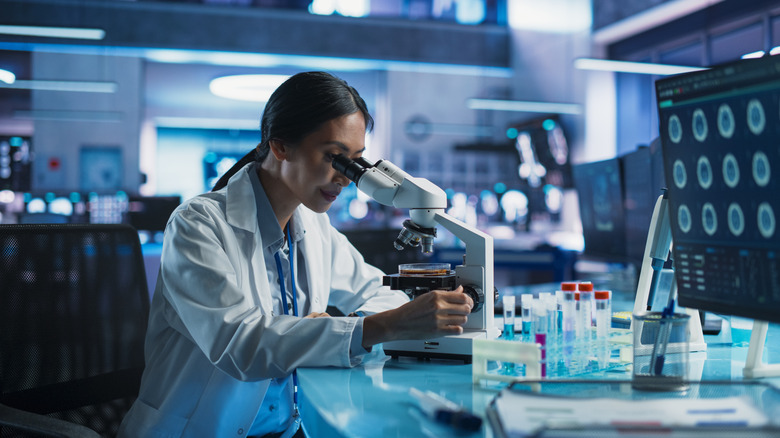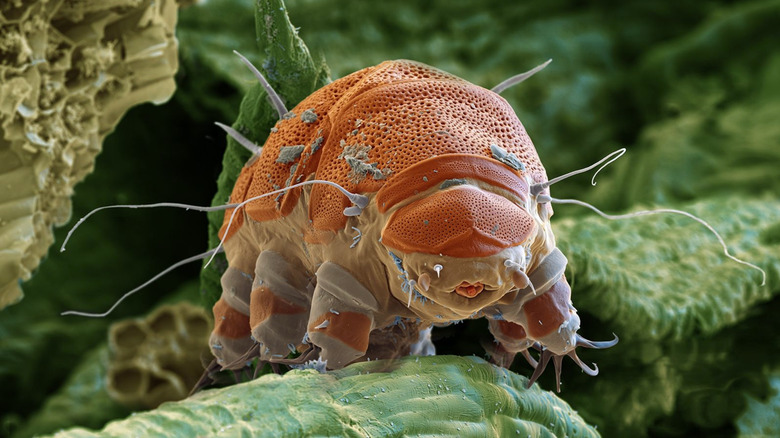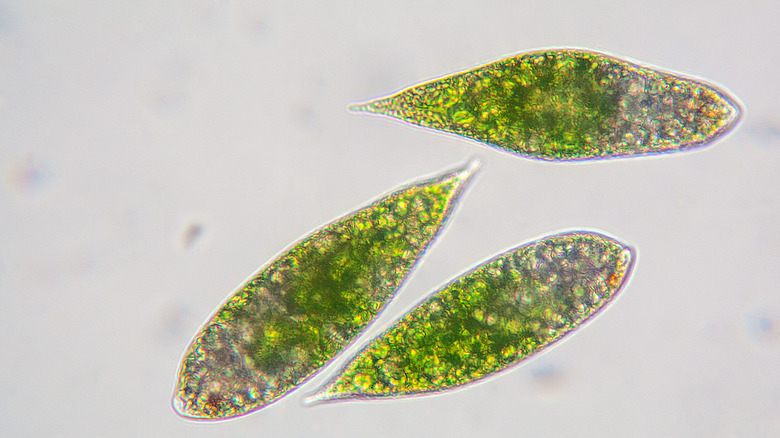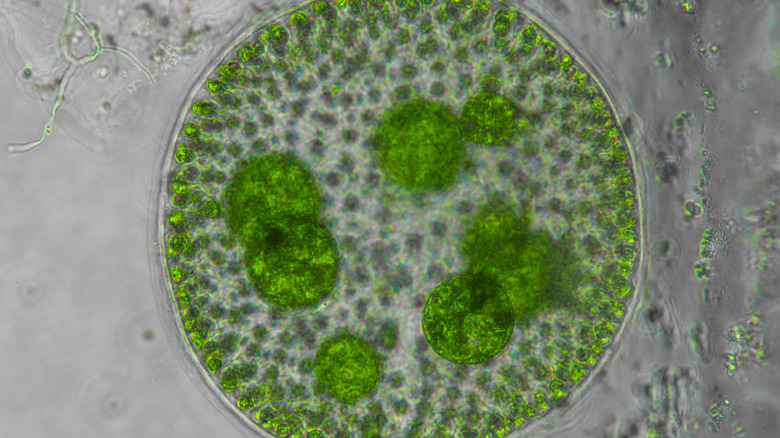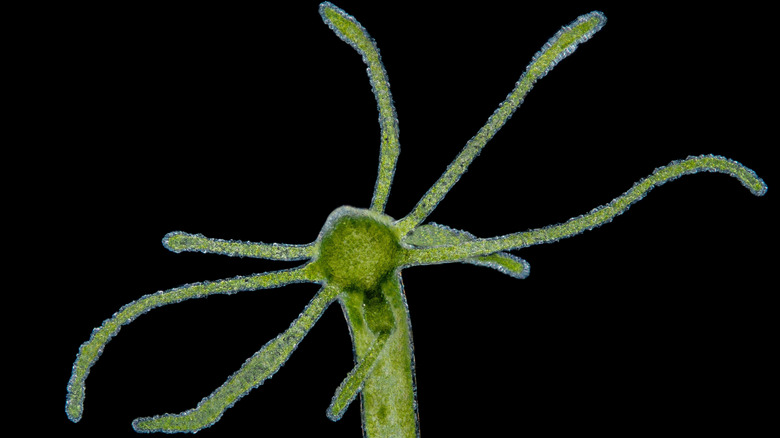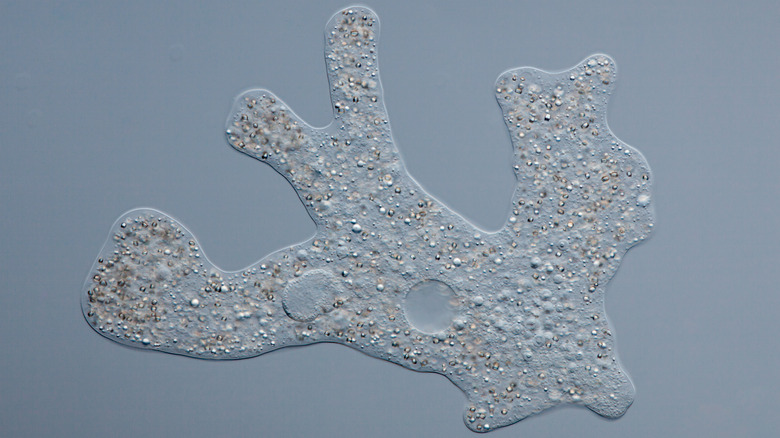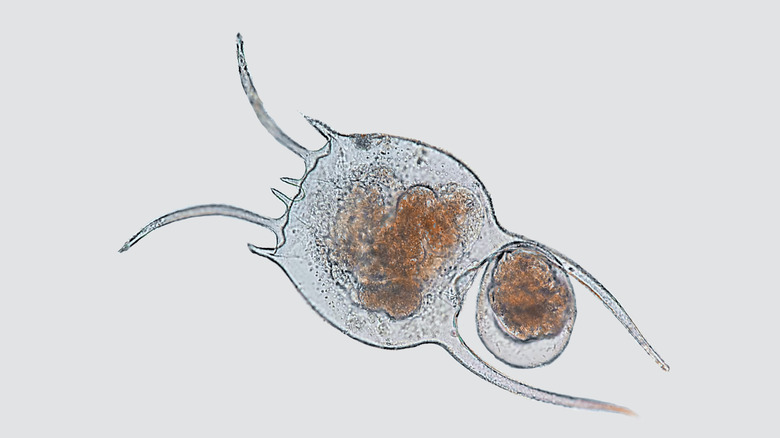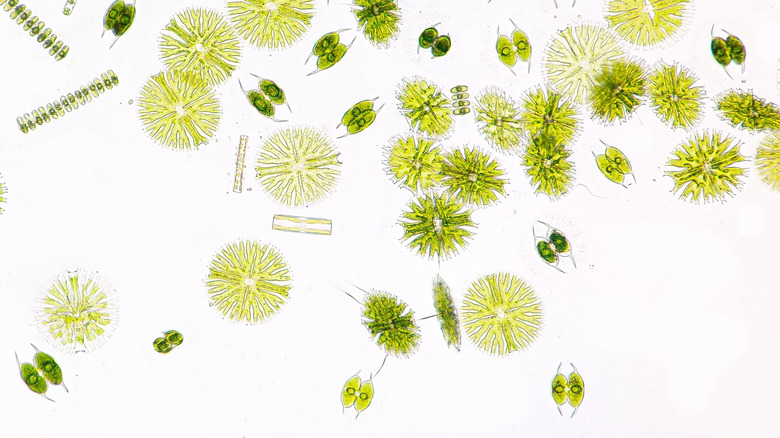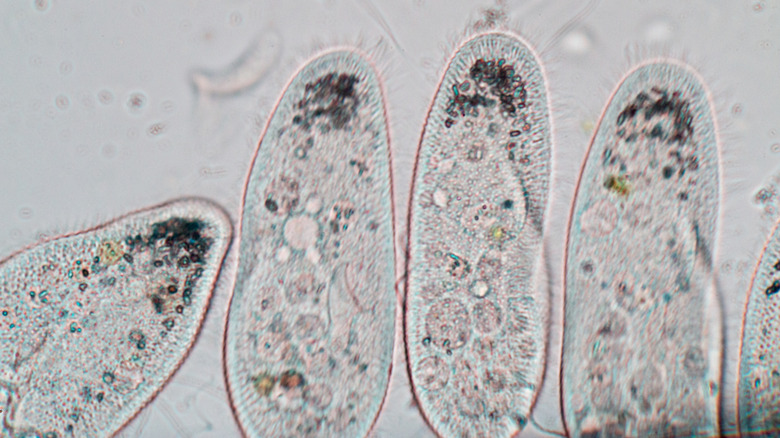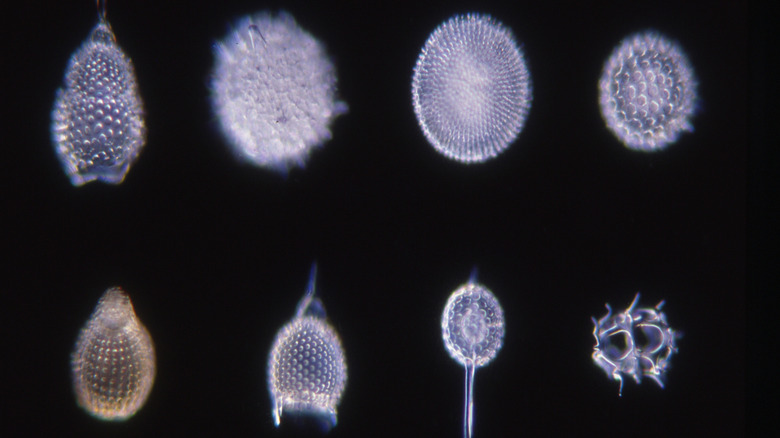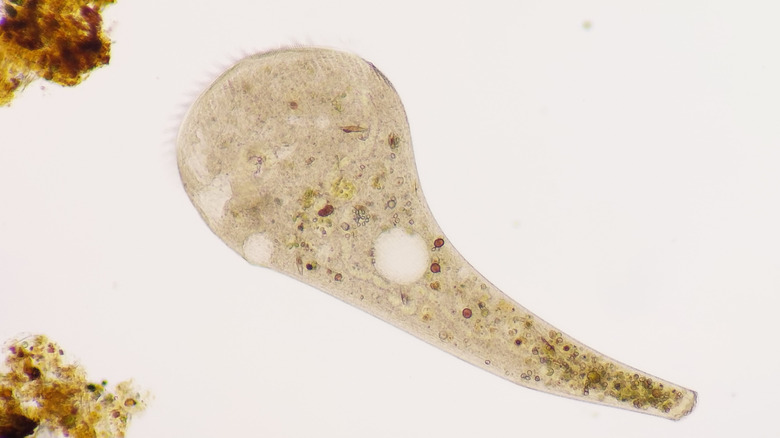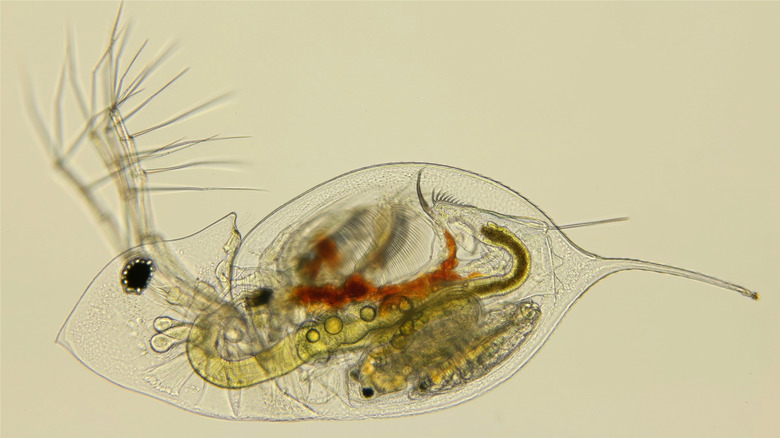11 Strangest Organisms You Can Only See With A Microscope
When thinking about strange animals, we may automatically summon up an image of the famous blobfish with its sullen, slimy face, or the duck-billed platypus, a mammal that has somehow decided to lay eggs. We are limiting our judgements, naturally, to creatures we can actually see, but some of the most bizarre living things can only be seen under a powerful microscope.
Hidden away from sight, some microscopic organisms possess interesting characteristics and abilities that seem otherworldly. From surviving in the lowest known temperature on the planet to regenerating huge portions of their bodies when injured, some of these tiny creatures defy belief. Not only are they strange by our human standards, but their powerful abilities may be able to pave the way for future scientific progress.
Join us as we take a close look at these minuscule creatures and explore the logic behind their bizarre features. By understanding the science, we can unravel the mystery behind their unusual traits.
Tardigrade
If you were to guess what one of the toughest creatures on earth may be, chances are you wouldn't be thinking of the tardigrade. These tiny creatures measure no more than 1.2 millimeters and can be as small as 0.1 millimeters. They are also known as water bears, and have been known to survive extreme conditions that would destroy the majority of other life on earth.
Tardigrades have been seen to survive temperatures of -272 degrees Celsius, only 1 degree above absolute zero, as well as heat of up to 150 degrees Celsius. Withstanding extreme temperatures is not their only superpower though — they can handle pressures of 40,000 kilopascals, which is almost 7 times as much as the maximum pressure a human could cope with. To test how far their hardiness stretches, scientists have even sent them into space, and been amazed to find they survived.
The secret to the water bear's survival is in a process known as cryptobiosis. This involves an organism effectively putting themselves into a state of "fake death" by slowing their metabolism down to virtually zero. The expel almost all of their water to shrink down to something called a tun. In spite of their usual lifespan being only months, they are able to stay in their suspended tun state for more than 30 years. Despite their rather cute appearance under a microscope, the tardigarde has proven itself to be among the toughest organisms ever discovered on Earth, returning back to its original state once it rehydrates, and continuing as if nothing had happened.
Euglena
You may not have heard of the euglena, but they are bizarre microscopic creatures. They are a crossover between plant and animal, managing to create food through photosynthesis just as plants do, and eat food like an animal, too. The battle between zooologists and botanists to claim euglena as their own has raged for years, and the compromise is that it has been given the difficult and confusing classification of a protist. Protists are a small group of creatures that exhibit properties of both animals and plants, but cannot be truly defined as either.
As if being a plant-animal hybrid wasn't strange enough, euglena also have another unusual feature. They have a large red "eye" that detects light and allows them to move toward it. This feature gives them their name, since euglena means "good eye" in Greek. The detection of light and subsequent movement toward it sums up the benefits of having both animal and plant-like features. While most plants are static and can only bend towards the sun, euglena can use their flagellae to move in the water. If light is scarce, they switch to their animal tendencies and feed on other microscopic organisms to get nutrition. This unique ability to feed as both a plant and an animal give euglena's chances of survival a big boost, and it makes them incredibly resilient.
Volvox
If you saw volvox in the water, you would be forgiven for thinking they were not a microscopic organism, since they can be seen by the naked eye. On closer inspection, however, the visible sphere, measuring a few millimeters across, is in fact a colony of anywhere from 500 to 60,000 individual organisms, "swimming" together as one.
Volvox is a green algae, and each individual alga has tiny hairs, known as flagella, that allow them to move. Rather than moving on their own, the algae attach via cytoplasm and move as one huge structure, beating their flagella together to propel them through the water. As autotrophs, volvox need sunlight to photosynthesize, and their red eyespot allows them to detect light and move toward it.
Another unusual feature of volvox is their method of reproduction — they take part in both asexual and sexual reproduction. At certain times of year, they reproduce asexually, creating daughter cells inside the parent. At other times, they switch to sexual reproduction, creating zygotes that have a better chance of surviving harsh winter conditions.
Hydra
The next microorganism on this list essentially has superpowers — in that it can regenerate when injured or damaged. The hydra is a tiny, aquatic creature that can regrow body parts, and could offer a glimpse at the potential of immortality, such is its reluctance to age or die.
The amazing anti-aging properties of hydra come from their stem cells. Human stem cells, and those of most mammals, are abundant before birth and in childhood, allowing for growth and repair. As we age however, they decrease significantly, and the potential of using stem cells as an anti-aging treatment is a hot research topic.
In hydra, stem cells seem to remain active for the life of the organism, giving them amazing abilities to heal and prolong life. This has led to scientists studying the stem cells in hydra to further their understanding of how stem cells could be used in human to encourage repair and prevent disease. Since in some cases, hydra can completely regrow body parts, any advance they can bring to stem cell research could mean promising results for tissue regeneration in humans too.
Amoeba
As one of the simplest organisms on earth, you may not expect that amoebas would exhibit any amazing or unusual traits, but that is not the case. These single-celled creatures are capable of many fascinating functions, many of which have only recently been discovered. Amoebas are officially classified as protists, meaning they are neither animal nor plant. This hybrid classification put them in a difficult position in terms of scientific research, as zoologists and botanists are focusing specifically on animals and plants, with no real interest in the middle ground. As a result, much of the science of amoebas had been missed until this century.
One of the peculiarities of the amoeba is its ability to change shape. To move, an amoeba extends a "foot" called a pseudopodia, which means false feet. This foot allows the creature to flow along a surface, changing its shape temporarily as it does, in the same way that water is constantly changing shape as it moves. They can then use their pseudopodia to eat by trapping food and surrounding it before ingesting.
Amoeba have recently been discovered that have created a shell for themselves out of sugar and protein, suggesting that there may be more to this tiny creature's abilities than was first thought. The ability to create protection for itself means the humble amoeba could be more sophisticated an organism that science has given it credit for up till now.
Rotifers
Rotifers are unusual looking microorganisms, with a wheel-like structure in their head that gives them their name. The word rotifer means "wheel-bearer" and refers to the tiny hairs around the mouth of the organism, which are arranged in a circle. Though they look intruguing, this collection of cilia have an important purpose — as the cilia beat, they pull water towards them, allowing them to feed on algae and other organisms nearby. The cilia also allow them to move through their aquatic environment in search of food.
Rotifers also have an astonishing ability to survive in extreme conditions. In a similar way to tardigrades, they can take part in cryptobiosis, meaning they can dry out and become dormant, then return to normal once the environment is safe again.
Another unusual trait of rotifers is their method of reproduction. In most cases, asexual reproduction takes place, where identical genetic clones are produced as offspring, but in bdelloid rotifers — of which there are 450 different species — there don't appear to be any males in existence at all! While this may seem like a bad idea, genetically, they seem to be able to absorb DNA from other organisms, keeping the gene pool diverse in spite of the absence of sexual reproduction.
Desmid algae
If being perfectly formed was the point of all existence, then the desmid algae would be winning at life, hands down. These green algae are beautifully symmetrical, made of two half-cells that are identical, creating stunning patterns that are incredibly satisfying to the eye. The two semicells are joined by a thin section called the isthmus, which is where the nucleus is found. When they were first discovered, it was assumed that each desmid algae was actually two cells side by side. In fact, it is officially a single-celled algae.
An organism as beautiful as this has a right to be fussy, and desmids are very particular about their environment. They live in low-nutrient water of a certain pH, and their presence can indicate a low-pollution environment. In general, they are associated with oligotrophic water that is very clear and oxygen-rich. These waters are ideal for drinking from, due to the lack of organic matter.
Paramecium
The paramecium is a single-celled organism that makes it onto this list thanks to its unusual swimming methods. It is classified as a protist, meaning it is neither a plant nor an animal. The paramecium is completely covered in tiny hairs called cilia, which is instrumental in the way it behaves.
The cilia move in unison to send the paramecium gliding through the water in search of food. When scientists studied its movement, they found it moved in spiral patterns, thrust forward by the coordinated movement of the cilia. It "swims" forward, then turns backward, and then continues forward again toward its target, which scientists call an avoiding reaction. When the paramecium reaches food such as bacteria or algae, it uses the movement of the cilila to drive the food into its mouth.
Another unusual aspect of the paramecium is the presence of two nuclei. Most single celled organisms have one nucleus, containing the genetic material needed for the whole cell. The paramecium, however, has both a micronucleus and a macronucleus, with each one controlling different aspects of the cell's behavior. The micronucleus' main purpose is sexual reproduction, while the macronucleus controls the majority of the day-to-day functions of the cell
Radiolarians
Looking at an image of a radiolarian, it would be understandable to think it was something from a sci-fi movie. These tiny creatures exist in a range of beautiful intricate shapes, with each individual organism creating a detailed skeleton made of silica. Some species have skeletal spines that can be up to 10 times the size of their shell, and the skeleton is crucial to keep the radiolarian at the correct water depth. When needed, they can create a heavier shell to allow them to sink deeper into the ocean, particularly during the time of reproduction. The deeper waters have fewer predators, making it a safer place to release their reproductive cells.
They have been studied for over 200 years as fossilized remains and could potentially provide information about Earth as long ago as 500 million years. Their continued existence proves their resilience, as they have survived through multiple major mass extinctions on Earth that have eliminated much of the life on the planet.
Stentor
The stentor has the unique distinction among the microorganisms on this list of being a "giant." Growing as large as a whopping 2 millimeters, it is the largest single-celled organism, and it can be seen with the naked eye. In addition to its relative hugeness, the stentor has remarkable regenerative abilities, making it of huge interest to scientists.
Janet Sheung, researcher at the Marine Biological Laboratory at the University of Chicago, described the significance of the stentor's amazing regenerative abilities: "A human with the same capabilities would be able to regenerate in full from a single finger!" The reason this ability is so remarkable is that as a unicellular organism, the stentor doesn't have a nervous system or a brain, and yet it is able to rebuild itself so perfectly.
Researchers are studying the genetics of stentors to work out whether the multiple thousands of copies of its genome stored in the cell may be significant, compared to the two copies that humans have. If the regeneration mechanism can be tapped into, it could lead to massive progression in the field of human anti-aging treatments and longevity.
Daphnia
Daphnia, commonly referred to as water fleas, are tiny crustaceans often found in fresh water. Their nickname comes from the way they seem to "jump" through the water, and they have a few unusual features that set them apart from other microscopic creatures. One unique aspect is their transparent bodies, allowing scientists to study their internal workings under a microscope. Being able to see how their internal organs operate gives marine biologists a great insight into how larger creatures are likely to operate too. You can actually see the heart of a daphnia beating under the microscope, as well as their digestive system, and even the process of reproduction.
Daphnia also have an incredible ability to change their size and shape when in danger. Under threat, they can alter both the shape and size of their body, including creating protective structures such as helmets or spines, increasing their chance of survival from their many predators. This phenomenon, known as phenotypic plasticity, has led to them being the subject of much research, but scientists are as yet unable to determine which features of a predator lead to particular physical changes.
